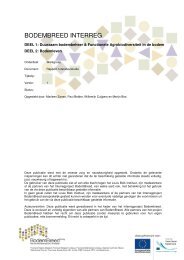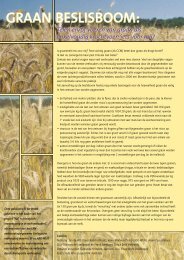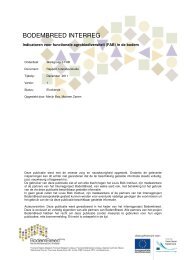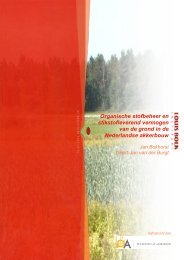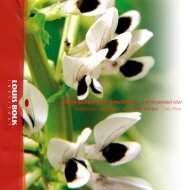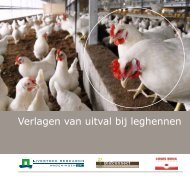Respiratory System Disorders and Therapy From a New - Louis Bolk ...
Respiratory System Disorders and Therapy From a New - Louis Bolk ...
Respiratory System Disorders and Therapy From a New - Louis Bolk ...
You also want an ePaper? Increase the reach of your titles
YUMPU automatically turns print PDFs into web optimized ePapers that Google loves.
could give the patient the substance that generates these symptoms in a healthy person,<br />
on the condition that you give small amounts. Hahnemann noticed that taking ‘normal’<br />
amounts of cinchona bark had a worsening effect on the malaria patient. He started to<br />
work the original medication into stable dilutions. In patients with malaria symptoms,<br />
taking the dilution ultimately resulted in the symptoms disappearing permanently. The<br />
system of shaking <strong>and</strong> diluting is called ‘potentiating’. Nowadays, this is generally done<br />
by machines.<br />
Hahnemann thus tried out complete series of ‘medicines’ using the above-named technique<br />
by doing a medications test. Those tests resemble phase I trials in conventional medicine<br />
<strong>and</strong> are also called ‘provings’ or, more recently, Homeopathic Pathogenic Trials (HPTs).<br />
Thus, medication pictures were developed that, in fact, are characteristic descriptions<br />
of the substances that can cure the matching clinical pictures. The descriptions of the<br />
medications are assembled in the so-called Materia Medica (Boericke/Phatak ed. 2005).<br />
As a result of the preparation process, homeopathic medicines work differently than<br />
conventional medicines. It is suspected that information is stored in the solvent, which<br />
then transmits a signal that is recognized by the self-healing qualities of the organism. The<br />
effective mechanism is more subtle than that of conventional medicines <strong>and</strong>, also, more<br />
specific. A specific homeopathic medication only works for a limited number of people<br />
who are sensitive to it. This can be compared to the genetic sensitivity for drugs that is<br />
the subject of study of pharmacogenomics. The symptoms that are used in homeopathy<br />
in order to estimate the chance of success could be seen as the phenotypic expression<br />
of such a genotypic sensitivity. Worth mentioning are the so-called §153 symptoms. In<br />
the 153 rd paragraph of the Organon, Hahnemann deals with these extensively. They are<br />
curious, different, <strong>and</strong> noteworthy separate symptoms from the patient’s history that are<br />
specific for the patient in question. If present, they can lead the prescriber in the right<br />
direction to the medication that is to be used.<br />
Based on an extensive history, knowledge of the various drug pictures <strong>and</strong> pattern<br />
recognition, the prescriber can come up with the medication picture that ‘resembles’ most<br />
the symptoms of this patient in this situation. In order to do this, a repertory is used, in<br />
which — in layman’s terms – all of the symptoms that can be generated by the drugs are





